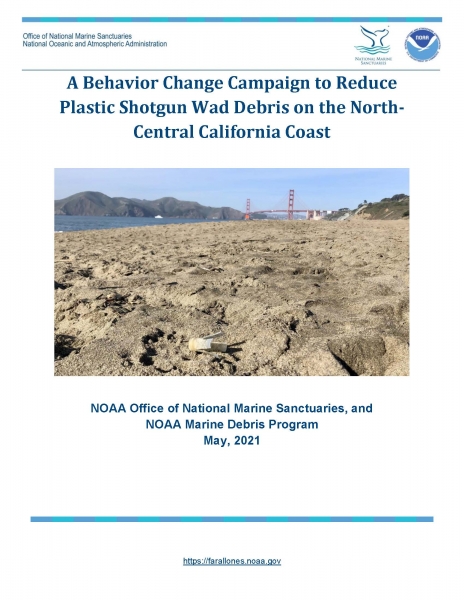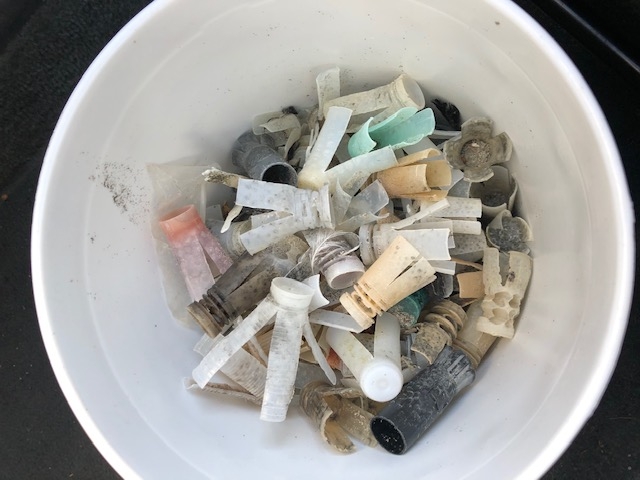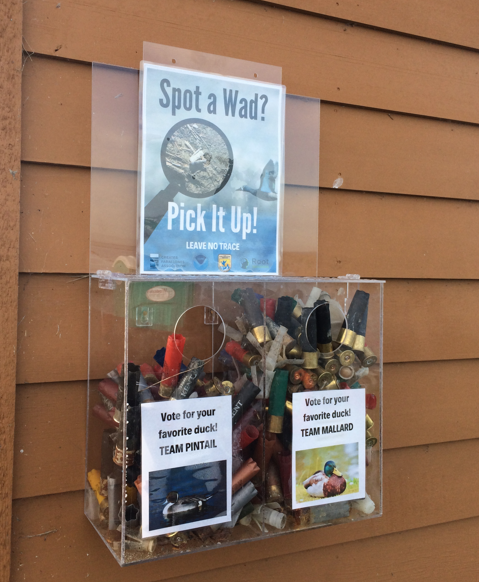Consistent shoreline monitoring and data gathering efforts are essential to understanding local marine debris issues, how they change over time, and what types of debris are most common. Between 2012 and 2018, monthly marine debris monitoring surveys were conducted at six Greater Farallones National Marine Sanctuary beaches, located on the North-Central California Coast near San Francisco, using the NOAA Marine Debris Program’s Marine Debris Monitoring and Assessment Project protocols. Data analysis identified rope, straws, bottle caps, and shotgun wads as four of the most commonly found plastic items across all surveyed sites. Shotgun wads are the plastic piece inside a shotgun shell that separates the shot from the powder, are tied to a specific activity, and are likely to originate from specific locations where hunting takes place.
Greater Farallones National Marine Sanctuary, Greater Farallones Association, and Root Solutions came together, with funding from the NOAA Marine Debris Program, to turn this data into action. They developed a project to reduce plastic shotgun wad debris from entering San Francisco Bay and depositing onto coastal beaches. Hunters were encouraged to pick up their own shotgun wad debris and any others they saw. In order to encourage these behaviors, shotgun wad disposal receptacles were installed for three weeks in January 2020 at two hunting reserves in San Francisco Bay: Don Edwards San Francisco National Wildlife Refuge (Don Edwards) and Eden Landing Ecological Reserve (Eden Landing). In-person interviews and surveys with hunters and reserve managers provided valuable insight on receptacle size, type, and location, and educational signage.
The results of the pilot project affirmed that a behavior change campaign is an effective way to address this type of marine debris that can be easily connected to a specific activity and location. The pilot project is documented in the report, “A Behavior Change Campaign to Reduce Plastic Shotgun Wad Debris on the North-Central California Coast.” The report provides recommendations to reduce shotgun wads in sanctuary and adjacent waters and on beaches by partnering with hunting reserves and hunters to pick up and properly dispose of shotgun wads. It also shares the lessons learned through carrying out this pilot project. These include suggestions for creating or improving upon existing shotgun wad reduction behavior change campaigns; the lack of alternative biodegradable ammunition and suggestions for procurement of alternatives in retail stores; the role policy and legislation can play in incentivizing or promoting biodegradable ammunition; and financial investment options for reducing manufacturing costs.

This pilot project is an important first step for utilizing behavior change campaigns to address the issue of marine debris. Understanding and including the beliefs and values of the waterfowl hunting community to reduce shotgun wad debris was essential to this campaign. This report can serve as a roadmap for addressing environmental issues through behavior change campaigns that design and implement strategies based on the beliefs and values that influence the behavior of the target audience. It is a great example of how a robust dataset on the types and abundances of marine debris in the environment can inform prevention initiatives.



Great blog. I know this article is about the Pacific coast but on the island of Guernsey (between France and England (north east Atlantic) plastic shotgun cartridges and plastic wads wash up. Some will be of local origin but we think some may float across the North Atlantic from North America. We don't know if there are markings that could tell us the origin of the plastic shotgun cartridges and the plastic wads. Some cartridges and wads I have collected here: https://www.sealordphotography.net/search#q=plastic+shotgun+cartridges&i=0